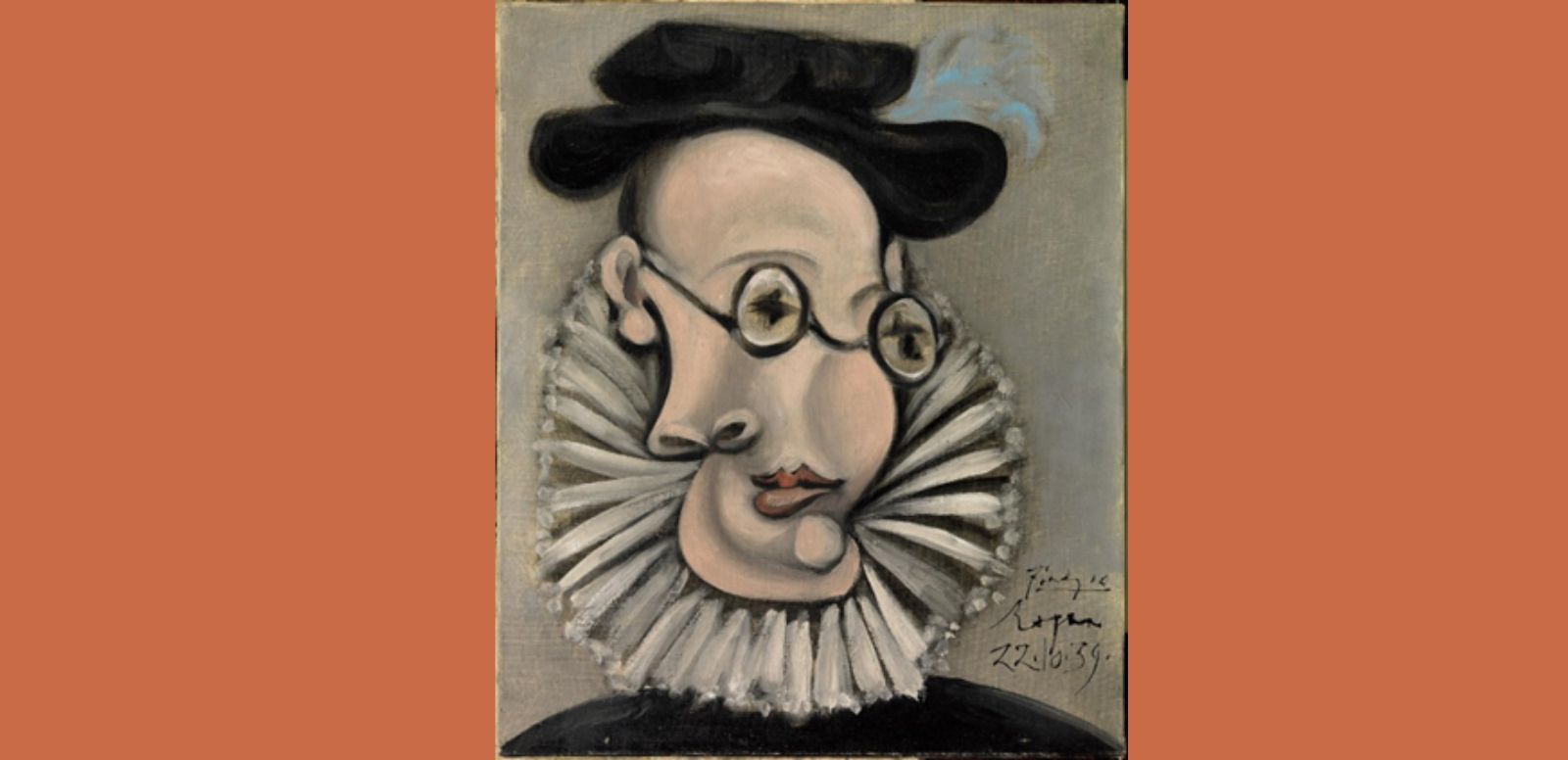
Donación Jaume Sabartés, 1962
Museu Picasso Barcelona
© Sucesión Picasso, VEGAP, Madrid, 2023
Jaume Sabartés with ruff and hat (1939) is a singular portrait that captures the essence of the relationship between Picasso and his great friend Jaume Sabartés, who, in this portrait, is immortalized as a gentleman dressed in the style of the time of Philip II.
This piece is set in the context of World War II, when Picasso, along with Dora Maar and Sabartés, sought refuge in the quiet seaside resort of Royan, on the French Atlantic coast.
Jaume Sabartés (Barcelona, 1881-Paris, 1968) met Picasso in 1899 in Barcelona, forging a friendship that would survive even their long separations, such as the poet's stay in Guatemala from 1904 to 1927. From 1935, back in Paris, Sabartés became the artist's personal secretary. In 1960 he donated his library and an important collection of Picasso's graphics to the Museum of Malaga and his collection of works by the artist to the city of Barcelona, the seed of the current Museu Picasso de Barcelona, which was inaugurated in 1963.
Jaume Sabartés with ruff and hat (1939) is more than just a portrait; it is an artistic expression of the friendship, complicity and creativity shared between two outstanding figures of the 20th century art world. The work highlights Picasso's unique ability to fuse tradition with innovation and irony with affection.
The irony is revealed in the humorous and caricatured depiction of Sabartés, who is portrayed on several occasions in various guises, as a knight, monk or clown, among others. Although the tone can be biting, Sabartés deeply appreciated these depictions, considering it an honor to be immortalized by the genius of Picasso, even when it was a friendly mockery.
The work is characterized by the distortions on Sabartés' face, where one can recognize the ruff around his neck, a fashionable element in 16th and 17th century Spain, and a pair of glasses in the shape of a quvedos, also reminiscent of the period. These details, combined with the hat, evoke a sense of historical portraiture. The piece offers a unique blend of styles that fuses cubist distortion with classical elements, with the color palette contributing tones reminiscent of the Golden Age.
Sources:
Museu Picasso Barcelona:
https://museupicassobcn.cat/es/coleccion/obra-de-arte/jaume-sabartes-con-gorguera-y-sombrero

